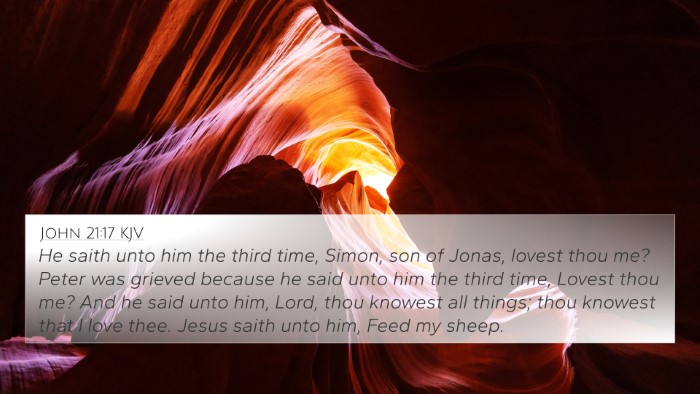Understanding Acts 10:16
Acts 10:16 states: "This happened three times, and the object was taken up into heaven." This verse serves as a pivotal moment in the narrative of Peter's vision, wherein God reveals His plan to accept Gentiles into the faith, thus highlighting the inclusivity of the Gospel.
Summary of Meaning
This verse encapsulates the profound transformation in early Christianity - moving from a Jewish-centric faith to a universal message. Peter's vision emphasizes that what God has cleansed should not be called common or unclean, bridging the gap between Jews and Gentiles. This shift in perspective is crucial to understanding the unfolding of the early church's mission as it ventures into the Gentile world.
Insights from Commentaries
- Matthew Henry: Matthew Henry notes that the repetition of the vision is significant, underscoring the importance of God's message. This divine communication emphasizes that God's intentions are not bound by cultural or social norms, reinforcing the notion that all people are welcome in God's kingdom.
- Albert Barnes: Albert Barnes underscores that the tripartite nature of the vision signifies completeness. The use of the number three is biblically significant, often representing divine completeness. Barnes elaborates that this serves as a direct instruction to Peter, pushing him toward a broader ministry.
- Adam Clarke: Adam Clarke explains the vision's symbolism, indicating that the animals represent the Jewish dietary laws that are now rendered obsolete in the sight of God. Clarke points out that this transformation of laws is central to the early Christian doctrine, representing a more profound theological shift.
Cross-Referencing Acts 10:16
In studying Acts 10:16, it is crucial to explore cross-references that enrich understanding. Here are some related verses:
- Matthew 15:11: "Not what goes into the mouth defiles a man, but what comes out of the mouth, this defiles a man." This reveals Jesus’ teaching about purity, paralleling the theme of God's acceptance.
- Galatians 3:28: "There is neither Jew nor Greek, neither slave nor free, nor is there male and female, for you are all one in Christ Jesus." This verse supports the thematic connection of unity in diversity through Christ.
- Acts 11:9: "But the voice answered me again from heaven, ‘What God has cleansed, you must not call common.’" This is a direct reference to Peter's vision, reinforcing the message of inclusivity.
- Isaiah 56:7: "For my house shall be called a house of prayer for all nations." This Old Testament prophecy links to the New Testament fulfillment seen in Acts.
- Romans 10:12: "For there is no distinction between Jew and Greek; for the same Lord is Lord of all, bestowing his riches on all who call on him." This encapsulates the inclusive nature of salvation.
- 1 Timothy 2:4: "Who desires all people to be saved and to come to the knowledge of the truth." This verse further supports the theme of God's desire for universal salvation.
- John 10:16: "And I have other sheep that are not of this fold. I must bring them also, and they will listen to my voice." This reflects the theme of Jesus’ mission beyond the Jewish community.
Thematic Connections
Acts 10:16 allows for an intricate exploration of thematic connections across scriptures. It raises discussions about:
- Acceptance and Diversity: The early church's movement toward accepting Gentiles as revealed through various visions and teachings.
- Change in the Law: The understanding of biblical laws in light of New Testament revelations.
- Unity in Christ: The emphasis on believers coming together regardless of their backgrounds.
Connecting Scripture: Inter-Biblical Dialogues
Through inter-Biblical dialogues, several significant messages and experiences converge in Acts 10:16, fostering a deep understanding of cross-referencing Biblical texts. These connections can elucidate:
- How the integration of Gentiles transformed the Apostolic mission.
- The theological implications of the Great Commission and its relation to Peter's visions.
- The role of visions in discerning God's will, evidenced by Old Testament prophets.
Tools and Methods for Cross-Referencing
To delve deeper into bible verse cross-references, one can utilize various tools and methods:
- Bible Concordance: Explore synonyms and terms that link verses together.
- Bible Cross-Reference Guide: Familiarize yourself with guides that outline relations and connections.
- Cross-Reference Systems: Some Bibles are designed with built-in references to help locate related verses.
- Online Resources: Many platforms have digitized tools that streamline finding connections.
- Group Study: Engaging in discussions with fellow believers can reveal insights through shared perspectives.
Conclusion
Acts 10:16 holds significance for both the historical context of the early church and the ongoing understanding of God’s inclusive nature. Through the cross-referencing of related biblical texts, one develops a comprehensive grasp of the intricate web of themes that unite the Old and New Testaments. Whether one is utilizing advanced tools for cross-referencing or simply reflecting on the interconnected narratives, the message of Acts 10:16 invites believers to embrace a fuller understanding of the Gospel's reach and effect.
To enhance your study, consider engaging with the keywords associated with cross-referencing, uncovering connections and significance in the tapestry of Scripture that informs Christian faith and practice.





